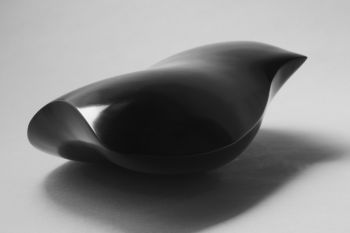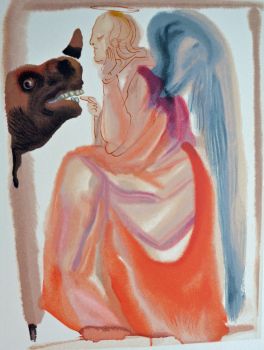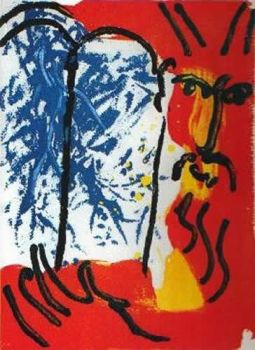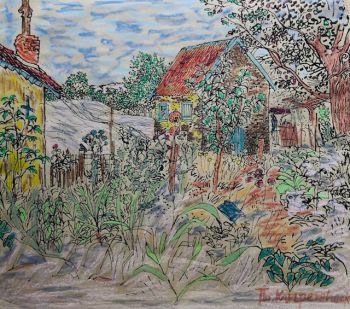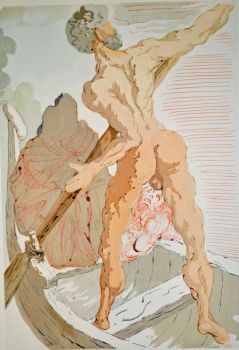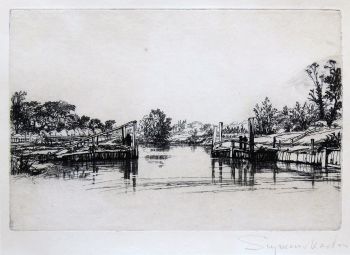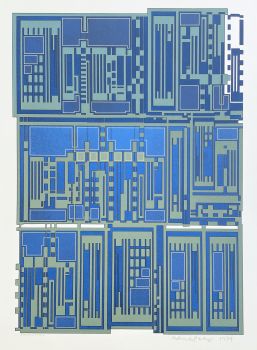La Source / The Source 1959
Alfred Manessier
InkPaper
46 ⨯ 36 cm
Price on request
Hans den Hollander Prints
- About the artworkmedium: Lithograph
edition size: 100 (16/100)
printed by: Mourlot, Paris
signature: lower right in pencil
French abstract painter, lithographer, and designer of tapestries and stained glass. Born at Saint-Ouen. Went to Paris in 1929 to study architecture at the Ecole des Beaux-Arts, but also copied Old Masters in the Louvre and worked in the evenings in the academies of Montparnasse. In 1935 became a pupil of Bissière at the Académie Ranson. Painted in the 1930s in the Cubist-Surrealist tradition. Spent 1940-6 first in Benauge (Lot), then from 1942 at Le Bignon in Normandy. Contacts with the Trappists in 1943 led to a deep commitment to religion. His work became abstract by 1945, though he continued to draw inspiration from religious and landscape themes. Exhibited with Le Moal and Singier in 1944 and 1946; first one-man exhibition at the Galerie Billiet Caputo, Paris, 1949. Also active from 1947-8 as a designer of tapestries and of stained glass for churches; has occasionally designed for the theatre. Awarded First Prize at the 1955 Pittsburgh International and the main painting prize at the 1962 Venice Biennale. - About the artist
Alfred Manessier was a non-figurative French painter, stained glass artist, and tapestry designer, who was part of the new Paris School. Manessier was born in Saint-Ouen. Both his father and uncle studied at Ecole des Beaux Arts at Abbeville. His father however strongly encouraged him to go to Paris to study architecture, for it was a profession that, in his opinion, would lead to more financial stability than being a painter. He had enrolled in architecture in 1929 but decided to switch to the fine arts and study at the Academie Ranson in 1935. Manessier disliked the school however and spent his spare-time copying paintings from old masters such as Rembrandt van Rijn, Peter Paul Rubens, and Tintoretto at The Louvre. Towards the beginning of the Second World War, his paintings tended more towards cubism and surrealism.
Manessier was chosen, toghether with fifty other painters, to represent avant-garde at the 1937 Paris International Exposition in transportation centers by painting a mural.
After marrying the painter Therese Simmonet in 1938 and joining the military for the Second World War, Manessier was picked to exhibit his works in the ’20 Young Painters’ exhibition in Gallery Braun. In 1943, Manessier made a 3-day visit to the Trappist monastery in Orne. He was deeply moved by the monks and their way of life, their link to nature and their spiritual being. He described them as pure and considered them to be inherently opposite to the 20th century men. His period of abstract painting would commence soon after.
Next to painting, Manessier started to work and experiment with other disciplines, which led to him being commissioned to produce costumes and sets for theatre productions. In 1947 he produced stained glass windows for a Breseux church and he produced a tapestry for a monastery in 1949. These other disciplines interacted with his paintings and were practiced throughout his career.
In his postwar period, Manessier created Lyrical Abstract works and showed interest in Art Informel. His works incorporate religious meanings through their titles, symbols and abstract imagery.
When visiting Canada in 1967 the expansive landscapes and large amounts of uncultivated areas that were almost untouched by Western culture inspired him and made him feel a deeper connection with nature.
He was the victim of a car accident in Loiret on 28 July 1993, and died four days later at the Source hospital in Orléans.
Are you interested in buying this artwork?
Artwork details
Related artworks
- 1 - 1 / 1
- 1 - 4 / 24
- 1 - 4 / 24
Engelbert Kaempfer
ENGELBERT KAEMPFER BOOK1651 - 1716
Price on requestZebregs & Röell - Fine Art - Antiques
1 - 4 / 24- 1 - 4 / 12













